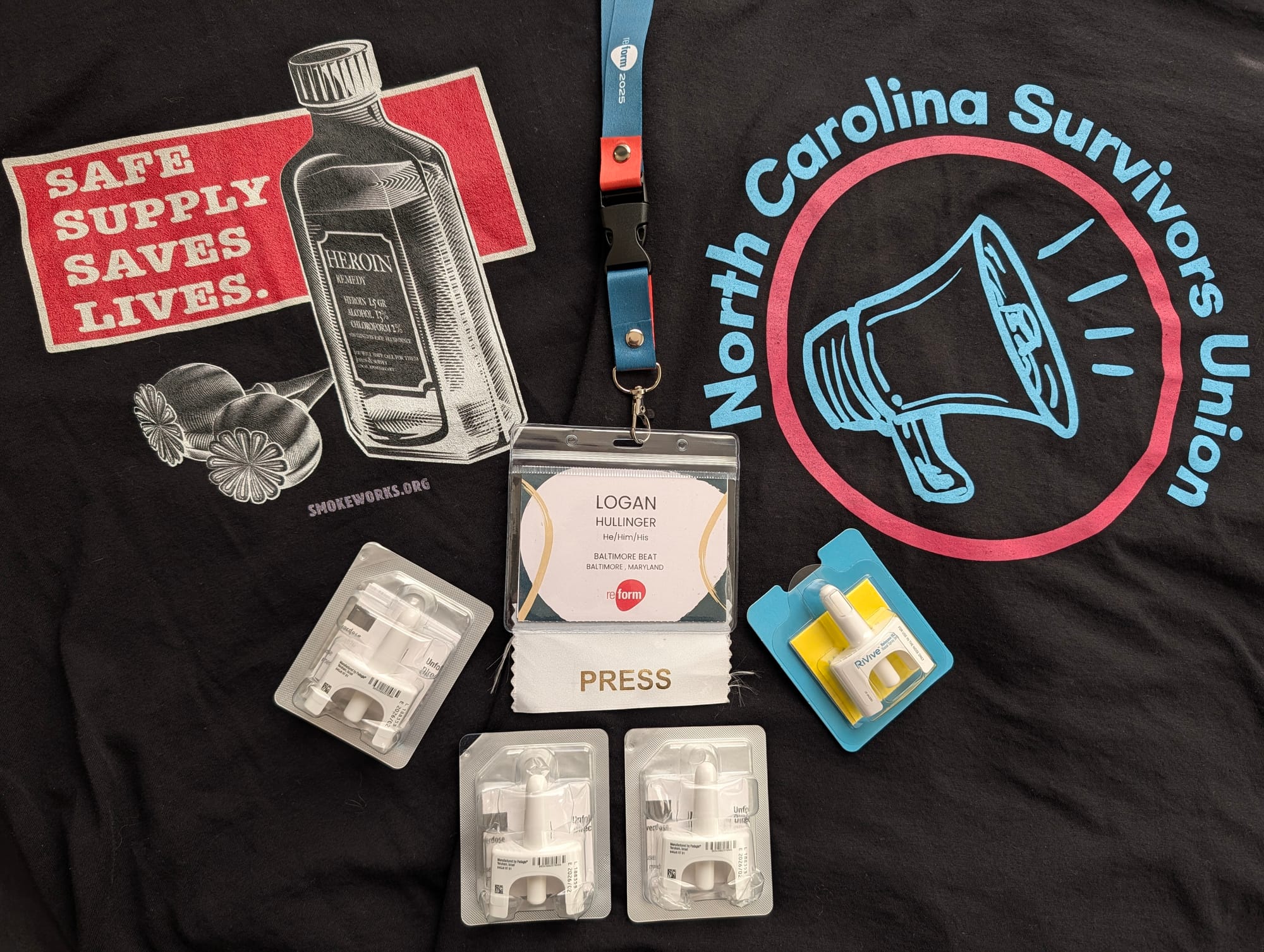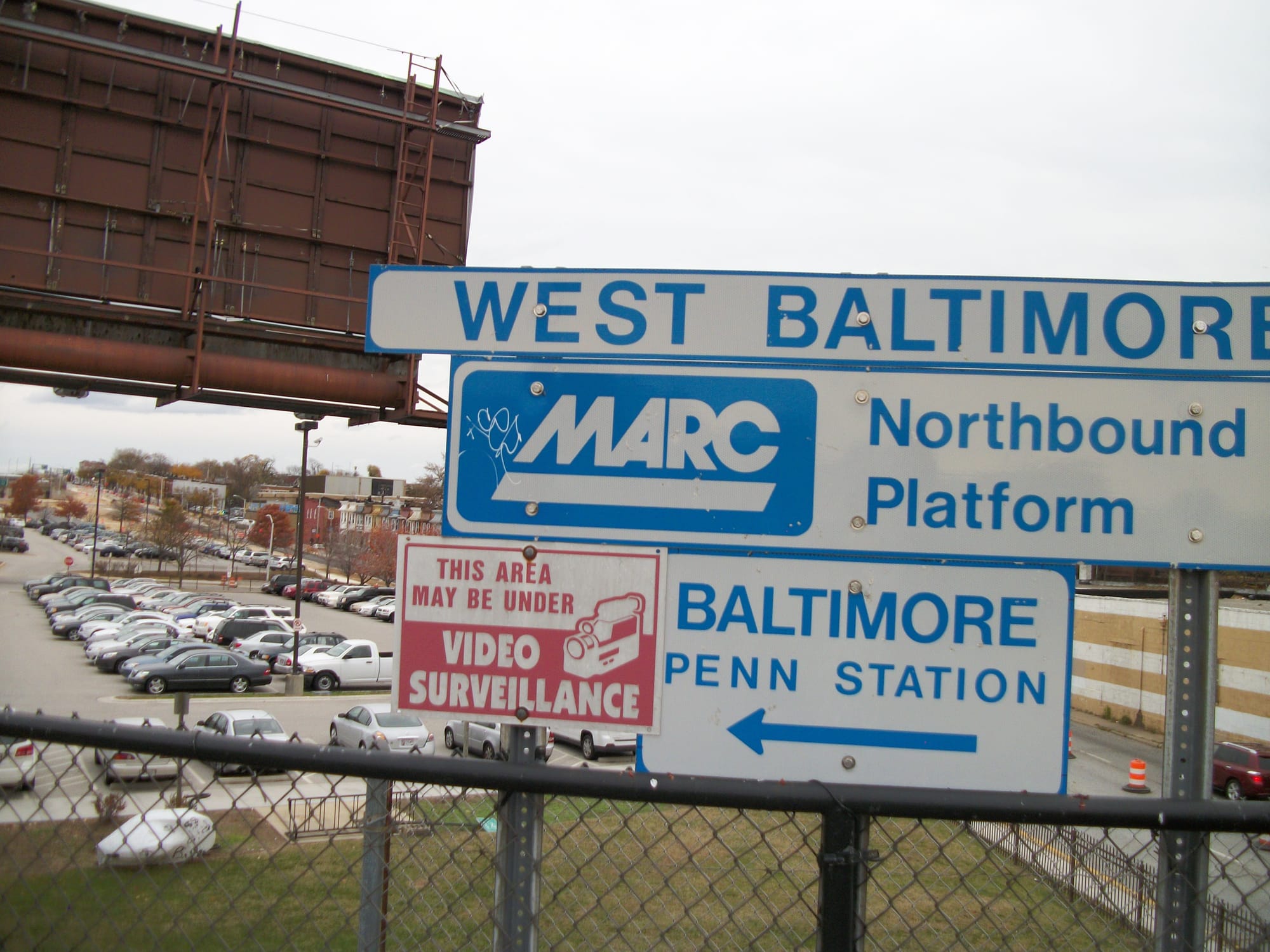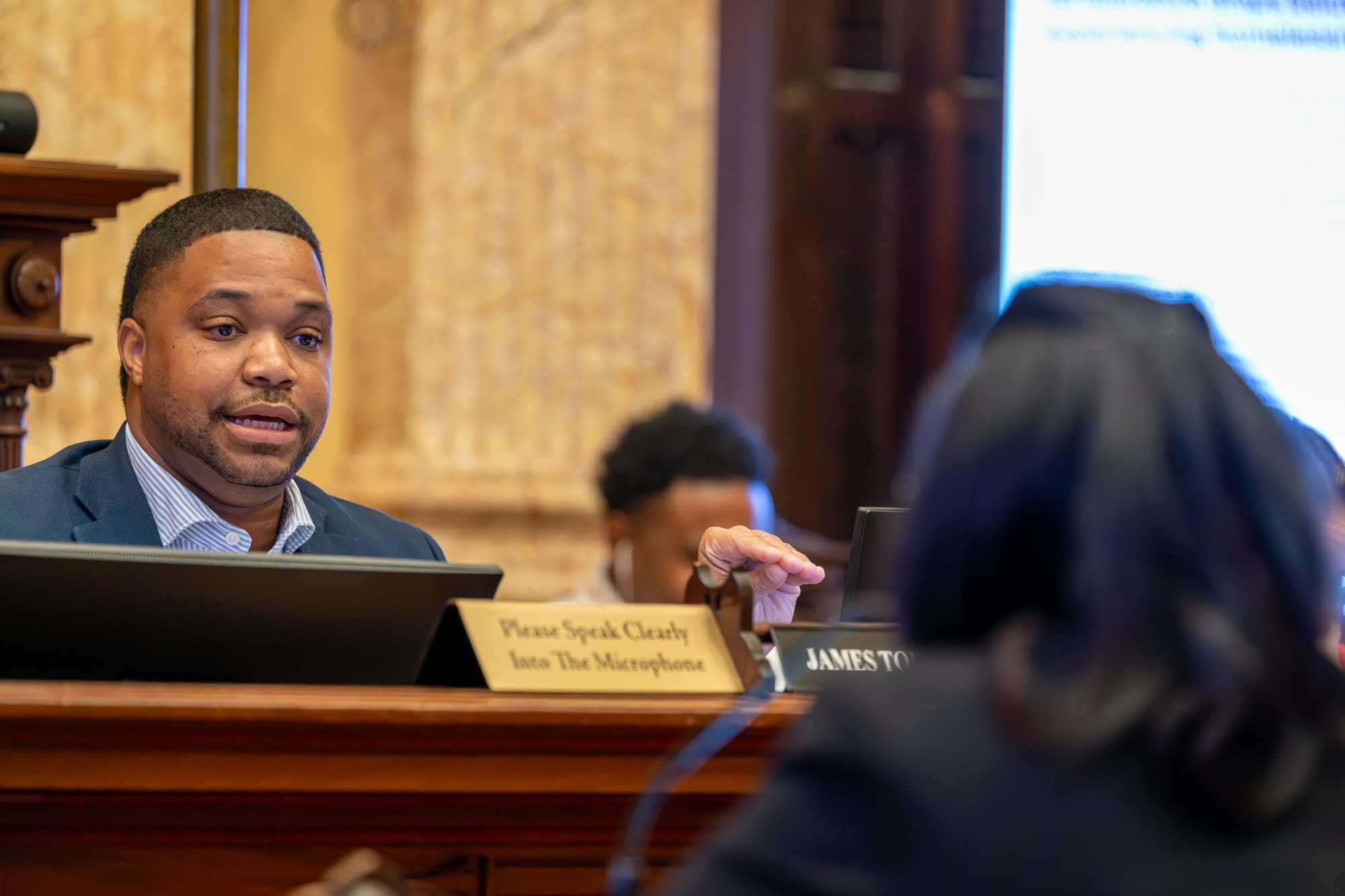
Four years ago, a headline in The Independent proclaimed, "Baltimore ends war on drugs with plot line straight from The Wire."
Aside from the overused and often-irritating reference to "The Wire," the 2021 article highlighted former State's Attorney Marilyn Mosby's de facto decriminalization policy. The move marked a historic break from the city's notoriously militarized policing strategy by ending the prosecution of low-level crimes, including misdemeanor drug charges such as possession. It was hailed by criminal justice advocates and harm reductionists across the nation.
There are just a couple of problems: Not only has the policy since been reversed, but it never ended the drug war to begin with.
Earlier this week, the Baltimore Beat published my months-long investigation into drug enforcement in Baltimore. The data, comprising tens of thousands of arrest records over the past decade, provides a staggering indictment of how drug-war policing was, and still is, conducted in Baltimore.
Over those 10 years, 88% of those arrested on misdemeanor and felony drug charges were Black. That percentage has trended upward since 2020, the same year the de facto decriminalization policy was implemented, peaking at 96% in 2021 — the same year that Baltimore was devastated by the most fatal overdoses ever recorded.
That year, the city saw more than 1,000 preventable overdose deaths. Deaths had been surging for years, and continued to trend upward until just last year as part of a national trend.
“Considering the history of policing in Baltimore, I am not completely surprised by those numbers,” said Catherine Tomko, a social scientist at the Johns Hopkins Bloomberg School of Public Health.
“The inflection point obviously is the death of Freddie Gray and the uprisings that happened. It created a big spotlight on Baltimore policing and its practices. And when the Department of Justice came in and investigated, they found really egregious, racist practices that targeted the Black community.”
The data, though unsurprising to those familiar with the history of Baltimore policing and drug policy, provides a disturbing account of the impact of the War on Drugs — especially on low-income Black communities.
In poorer, majority-Black neighborhoods such as those in ZIP code 21216 in West Baltimore, as many as 98% of people arrested on drug charges over the last 10 years were Black. Even in areas where most residents are white, Black individuals still comprised the majority of arrests.
Black Baltimoreans were also significantly more likely to face felony charges, comprising a whopping 95% of the total.
When combined with historical fatal overdose numbers —which show that death rates among older Black men skyrocketed in the past decade — it's difficult not to see the connection between drug enforcement, commonly referred to as "public safety" by local officials, and public health.
None of this is new, and claims that the War on Drugs is a thing of the past are ludicrous.
The drug war has decimated communities of color and fueled mass incarceration nationwide for decades, at least since Harry Anslinger made it his mission to target minorities through drug enforcement nearly a century ago.
Though prohibition and its impact on public health predate that, his role as commissioner of the U.S. Treasury Department's Federal Bureau of Narcotics laid out the groundwork for the racist drug war.
Since then, both Democratic and Republican administrations have fueled the war. And now in Baltimore, a deep-blue city, it lives on.
As noted in the Baltimore Beat piece, city officials "have found themselves unable — or unwilling — to let go of punitive drug enforcement and the millions of dollars it takes to bankroll the cops who carry it out."
Despite the concrete data, which I've turned into an interactive dashboard, there are likely a few rebuttals to the article. I feel like it would be beneficial to address them here:
- "How can you say that there's a drug war if the mayor and other city officials have repeatedly talked about the importance of harm reduction?"
Some people seem willing to take city officials at their word. Yet, while Mayor Brandon Scott and his administration have sworn that they are all-in on harm reduction, those priorities have come into question as early as this week.
On Tuesday, the Baltimore City Council passed a budget that increases police department funding by more than $20 million. It also cut the health department's funding by $7 million as officials fear that nearly half of their budget could be upended by federal funding cuts.
In other words, the agency carrying out the drug war stands to benefit, while the department overseeing life-saving programs will have less money to serve those who use drugs, among other populations.
At the same time, Scott has refused to answer questions about unilaterally implementing overdose prevention centers despite naming them one of his 21 “legislative priorities” this year.
He has instead left OPCs and "paraphernalia" decriminalization measures to the General Assembly, which have repeatedly failed to pass. It's unclear why he hasn't used his power to bolster the city's harm reduction infrastructure; New York City showed it could be done years ago.
- "Drug enforcement is about taking down kingpins, not the average drug user, isn't it?"
The next argument, which surfaced on social media sites such as Reddit, is that the police aren't going after drug users — they're going after those who sell drugs, typically large-scale trafficking organizations.
While it's true that low-level drug crimes plummeted, the data obtained from the BPD illustrates that possession-related arrests are still being conducted and have begun to tick up in the past two years under State's Attorney Ivan Bates. This includes charges for possession of marijuana, a substance that was legalized for recreational use in 2023.
Those charges may be significantly rarer than they once were, but arguing that a shift in focus to those who sell drugs doesn't harm those who use them is flawed. For one, it's common for individuals to sell drugs as a means to fund their own use. Also, the vast majority of arrests related to distribution aren't groundbreaking kingpin takedowns.
Moreover, the argument ignores the often deadly impact of interdiction itself. As noted in the Beat article, a study by Harvard University found that drug enforcement can increase overdose death rates by disrupting the drug supply and pushing drug users toward riskier sources, a phenomenon known as the “Iron Law of Prohibition.”
"We found compelling evidence that fatal and nonfatal overdose rates doubled following police raids to seize opioids and other drugs," the study states. "In the week following a drug bust, fatal overdoses doubled within 500 meters of the event, and within two weeks of police action, first responders were called to administer naloxone to reverse drug overdoses at twice the rate, suggesting an increase in non-fatal overdoses.
- "Baltimore has seen a historic decrease in homicides thanks to GVRS, which includes drug enforcement. How can you say that's not working?
The preceding argument leads into the final rebuttal, which also happens to be the main talking point parroted by city officials: Drug enforcement is not part of a drug war. Rather, it's a key tenet of violence prevention efforts.
The Beat's article cited a study in the International Journal of Drug Policy that largely contradicts the city's argument, stating that "the existing scientific evidence suggests drug law enforcement contributes to gun violence and high homicide rates and that increasingly sophisticated methods of disrupting organizations involved in drug distribution could paradoxically increase violence."
Still, officials have constantly attributed decreases in crime to the city's Group Violence Reduction Strategy, which aims to prevent violence by offering social services to those who are at the highest risk of becoming involved in violent crime.
While it attempts to connect those individuals to resources, the police will crack down with the full force of the law if their warnings aren't heeded.
Considering that drugs fuel violence, according to the city, drug busts — which have been proven to increase fatal overdose rates by disrupting the drug supply — come with the territory.
Yet, as fellow journalist Brandon Soderberg wrote in a piece for the Baltimore Brew last year, GVRS is not exactly what it seems at face value.
“From a community perspective, what we hear is that they see focused deterrence as just another ‘crackdown’ with a different name,” said Charles Ransford, director of science and policy for the violence interruption program Cure Violence, in the piece.
Later in the article, it describes the largest group investigation to date, which was an indictment of 33 people in an alleged drug trafficking operation. Only three individuals faced shooting-related charges. Yet all of them were hit with charges such as participation in a criminal organization, conspiracy to distribute controlled dangerous substances.
"The three people charged with attempted murder in the March 2023 indictment represent the only shootings in any of the 13 group indictments under GVRS. The majority of the charges were for firearm possession and drug dealing," Soderberg wrote.
In summary, GVRS remains a relatively nascent program that has served as a means to make drug busts and throw more people in prison cells in the name of violence prevention.
Meanwhile, it's been heralded as a driving force behind a drop in violent crime — an assertion that ignores the fact that a decrease in homicides and other violent crimes is part of a national trend (this is the same reason why people should think twice before giving the city too much credit for its historic drop in overdose deaths last year).
This breakdown of potential rebuttals to the article is a long-winded way of saying that the War on Drugs is alive and well in Baltimore, despite outward appearances and what city officials tout at press conferences.
As it has for decades, the drug war has targeted Black residents and weaponized fears about drugs to feed the carceral beast that is the American criminal justice system. Meanwhile, an increasingly lethal and unpredictable drug supply is killing those same individuals at higher rates.
As it now stands, city leadership has not indicated it has any intentions to implement more ambitious drug policy reforms, nor has it expressed a willingness to make drug-war policing a thing of the past.
Meanwhile, more than $600 million will be thrown at the police department this upcoming fiscal year, bankrolling the same pernicious law enforcement efforts I wrote about in the Baltimore Beat piece.
Without serious policy intervention, this crisis will continue. City officials must first be willing to embrace change for that to be possible.

Miss my latest article for the Baltimore Beat or last week's newsletter? You'll want to check them out
At first glance, it may seem that the War on Drugs has all but disappeared in Baltimore. The decades-long campaign decimated Black neighborhoods and fueled mass incarceration in the city under the guise of public safety.
From more than 7,000 arrests in 2015 to less than 2,000 in 2024, the number of people being arrested for drug crimes has plummeted. Public officials seem to have formed a consensus — one reflected more so in words than in actions — about the importance of harm reduction in place of a punitive approach to drug use.
Look closer, however, and it’s evident that the driving force behind the drug war has only gotten worse.
Newsletter: "Baltimore's landmark lawsuit is flawed — and so is the public's view on opioids"
For months, Baltimore had eagerly awaited a ruling by Judge Lawrence P. Fletcher-Hill — one that could have forced opioid distributors to bankroll a multi-billion-dollar abatement plan, allowing the beleaguered city to revolutionize its harm reduction and treatment infrastructure.
Meanwhile, the city's unprecedented overdose crisis raged on. Then Thursday came, and so did his decision: Fletcher-Hill rejected the city's request for $5.2 billion in abatement funds from McKesson and Cencora, formerly AmerisourceBergen. He also wrote that he would allow for a new trial against the two massive opioid distributors from which Baltimore sought the vast sum, reversing a 2024 decision that won the city $266 million.
“The Court finds that the verdict rendered is grossly excessive in light of the evidence and is shocking to the Court,” Fletcher-Hill wrote in his decision.
Mobtown Redux's Overdose Data Dashboard is frequently updated with the latest local, state and national data
Baltimore's overdose death toll in 2024 has increased to 776 — this is preliminary data that's subject to change as causes of death are determined. That marks a nearly 26% decrease from the year prior.
In the 12-month period ending in April, Baltimore saw 651 deaths, a death rate of 109.8 per 100,000 people. Statewide, there were 1,465 deaths, a death rate of 23.7 per 100,000 people.
Neighborhoods in West Baltimore saw the most deaths, an unfortunate pattern in this data.
Check out Mobtown Redux's Overdose Data Dashboard here.
Click here to learn more about harm reduction resources in the Baltimore area.
NPR: "U.S. drug overdose deaths rise again after hopeful decline"
For the first time in more than a year, street drug deaths appear to be rising across the U.S. according to a new report from the Centers for Disease Control and Prevention.
The latest available data, compiled in January of this year, shows fatal overdoses over the previous 12-month period increased by roughly 1,400 deaths.
"This slight increase reflects historic data and suggests that the U.S. saw more overdose deaths in January 2025 than it did in January 2024," the CDC said in a statement sent to NPR. "We are working on analyses to better understand geographic trends."
Click here to read the full article.









Comments